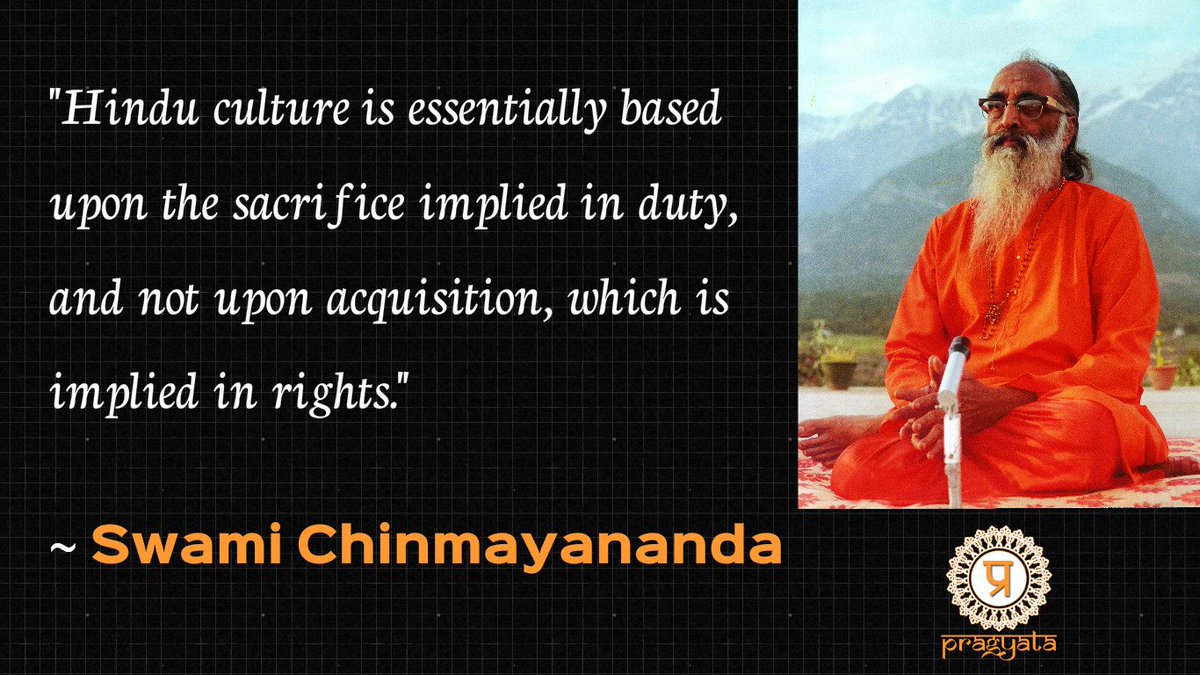#Ancient Culture ( Samskaram ) of Bharatham-3.5 : Swami Krishnananda
========================================================================
------------------------------------------------------------------------------------------------------------------------
1.
Now, emphasis being laid on the Brahmana portion of the Vedas, the ritualistic side of the Vedas, it became necessary for the performers of these rituals, or yajnas as they are called, to commence the performance at a particular time of the day as decided by the movement of the stars in the heavens.
How the planets and the stars influence everything in this world is the science of astronomy, on which astrology also is based. So a new science was developed called astronomy, which is Jyotisha. Jyotish Shastra is astronomical science. That also is a limb of the Veda, as it is important to know at what particular stellar or planetary conjunction it would be necessary to commence a yajna or sacrifice.
At auspicious moments only you start things, but how do you know which is the auspicious moment?
For this you have to know the movement of the planets and the stars, which is astronomical science, Jyotish Shastra. So we have Siksha, Vyakarana, Chandas, Nirukta, and Jyotisha.
------------------------------------------------------------------------------------------------------------------------
#OPINION : 01/03/2020 : 2074.
##Chapter 3: The Vedas – the Foundation of Indian Culture - 5.
-----------------------------------------------------------------------------------------------------------------------1.
Now, emphasis being laid on the Brahmana portion of the Vedas, the ritualistic side of the Vedas, it became necessary for the performers of these rituals, or yajnas as they are called, to commence the performance at a particular time of the day as decided by the movement of the stars in the heavens.
How the planets and the stars influence everything in this world is the science of astronomy, on which astrology also is based. So a new science was developed called astronomy, which is Jyotisha. Jyotish Shastra is astronomical science. That also is a limb of the Veda, as it is important to know at what particular stellar or planetary conjunction it would be necessary to commence a yajna or sacrifice.
At auspicious moments only you start things, but how do you know which is the auspicious moment?
For this you have to know the movement of the planets and the stars, which is astronomical science, Jyotish Shastra. So we have Siksha, Vyakarana, Chandas, Nirukta, and Jyotisha.
------------------------------------------------------------------------------------------------------------------------
2.
#Now comes the sixth limb. There are six limbs in total. It is called Kalpa Sutra. Kalpa Sutras are short aphoristic texts which deal with the details of the actual performance of the sacrifice.
*How do you start the sacrifice?
*What are the things necessary?
*How are they kept in proper order?
*Which is to be done first?
*Which is to be done afterwards?
*Which is the conclusion?
*What is the manner of the procedure of the whole sacrificial act which will go on for hours, sometimes for days together?
##The entire detail of the appurtenances of the performance of sacrifice is in the Kalpa Sutras.
------------------------------------------------------------------------------------------------------------------------
3.
#Incidentally, these Sutras have certain subdivisions. Srautasutra is one part of the Kalpa Sutras, which deals with only those sacrifices which are connected with the Brahmana portion of the Veda. The other section is Sulbasutra, which details the measurement of the articles that are used in the sacrifice.
*Suppose there is dharba grass, what should be the length of it; and if there is a vessel, what type of vessel should be used?
###These are some of the details which we have in the Sulbasutra. Then we have the Grihyasutra, sutras which detail the minor rituals that a person performs in one’s own house – not a huge sacrifice with a lot of people, etc.
####Every householder has a little puja, a little ritual, a little time allotted for worship. The miniature worships and havans, etc., which a grihastha or a householder does in one’s own house are detailed in the Grihyasutra. Grihya means connected with the house, so it is a Sutra connected with the performances in the house.
#####Then the other aspect of the Kalpa Sutra is the Dharmasutra: what is to be done and what is not to be done, what is proper and what is not proper. This has to be done and this should not be done.
######The dos and don’ts of performance regulating the ritual of every kind we have in the Dharmasutras.
----------------------------------------------------------------------------------------------------------------------
To be continued ...
-------------------------------------------------------------------------------------------------------------------------
JAY HIND
JAY BHARATHAM
VANDHE MATHARAM
BHARAT MATHA KI JAY.
========================================================================










Comments
Post a Comment